The Metropolitan Museum of Art, or The Met for short, is one of the three major art museums in the world, located in New York City.
It boasts one of the largest art collections in the world and attracts about 2 million visitors a year. It is probably the most popular art museum in New York City, a city of art.
In this issue, we will introduce information on the Met, from basic information to must-see artworks, so that you can conquer the Met once you have read this article!
What is the Metropolitan Museum of Art, one of the three major art museums in the world?

History of the Museum
The Metropolitan Museum of Art is a historic museum, first established in 1870.
Originally, the idea of creating an international-scale museum in the United States was conceived in 1864 among Americans gathered in Paris to celebrate American Independence Day.
Therefore, when the idea for this museum was proposed, it naturally did not have a single painting in its collection.
After its establishment in 1870, the museum moved in 1880 along Museum Mile on the Upper East Side, east of NY Central Park, where it is still located today. Since then, various additions have been made to the building to make it what it is today.
Today, the museum boasts a collection of 3 million works of art, including paintings, sculptures, photographs, artifacts, furniture, musical instruments, and decorative objects, so large that it would be difficult to visit the entire museum in a single day.
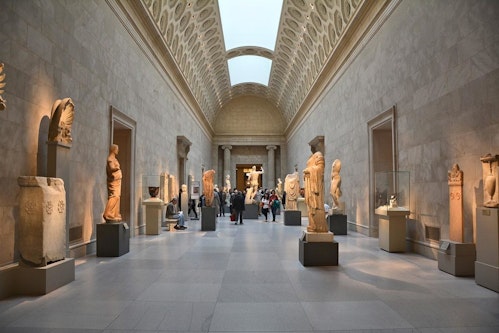
Features of the Met
The Met's unique feature is the breadth of its collection, which includes works from all periods, regions, civilizations, and techniques, both ancient and modern.
The Met's most distinctive feature is that it is neither a national, state, nor municipal museum, but a purely private institution.
The admission fee, which for a long time was only posted as a "suggested price," has since March 2018 been mandatory for all but New York City and New York-area residents. For more information on admission fees, please see the detailed information.
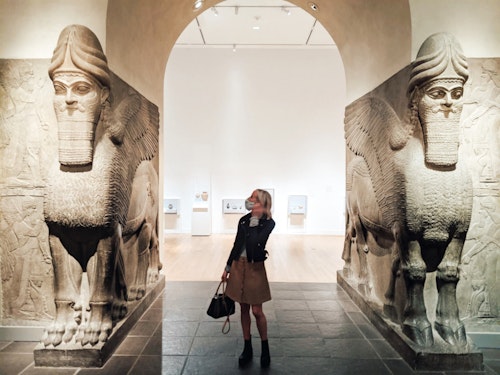
Highlights of the Metropolitan Museum of Art
The Metropolitan Museum of Art has a collection of not only European art, but also weapons, armor, Asian art, Egyptian and Islamic art, modern art, and even musical instruments.
Here are 10 works of art that are particularly recommended.
(1) Madonna and Child on Throne with Two Angels by Filippo Lippi
1440.
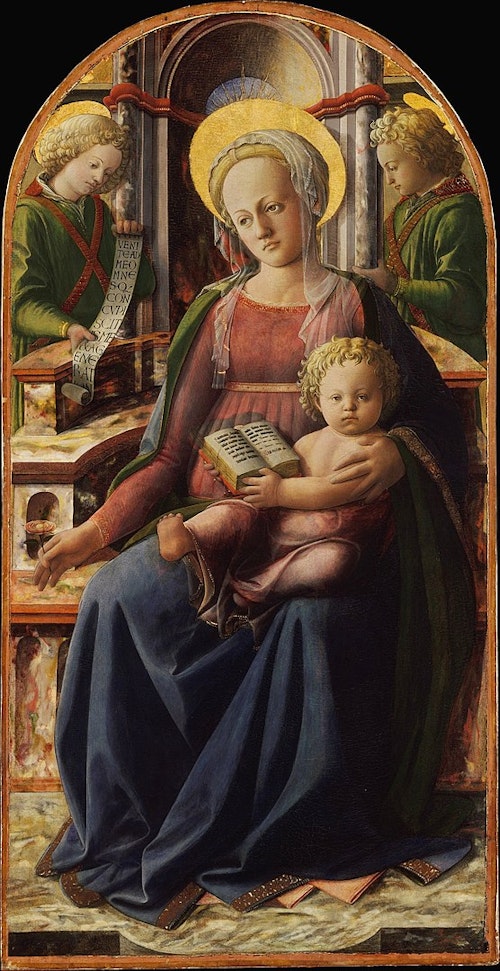
This Renaissance painting from the early 15th century captivated many visitors to the Met with its beauty and elegance.
The painting depicts the Virgin Mary, the Infant Jesus, and two angels, with the Virgin and Child seated on thrones. The Virgin Mary's graceful countenance and detailed clothing, the infant Jesus' lovely figure, and the angels' beautiful wings and expressions are all meticulously depicted in this work.
In addition, this work is distinguished by the vividness of its colors, especially the extensive use of blue. The blue used for the Virgin Mary's clothing and the angels' wings is striking in its beauty and depth, giving the entire work a sacred atmosphere.
This work was groundbreaking in the art world at the time it was painted, and the Virgin Mary's expression and pose were very natural compared to the average painting of the time. It can be said that it improved the expression of three-dimensionality and depth for realistic depiction, which is a tradition in Western painting.
(2) Diego Velázquez, Portrait of Juan de Pareja
1650.

The greatest appeal of this work lies in its detailed depiction of the personality and characteristics of the person depicted, Juan de Pareja. Velázquez's meticulous rendering vividly expresses the gentle gaze and distinctive facial features of Juan de Pareja.
Juan de Pareja was a Moor of mixed race born in Málaga in the early 17th century, a slave of Velázquez and at the same time his assistant in the workshop.
According to researchers, this work was painted by Velázquez at the beginning of his stay in Rome as a training ground for his most famous portrait, "Portrait of Pope Innocentius X," which was painted before Velázquez's most famous portrait.
The figure of Pareja expresses pride and pride as a human being, and it is a masterpiece that was born out of Velázquez's fraternal love for his pupil and his own conflicts about his origin as a converse. Immediately after the work's creation, Velázquez granted him an emancipation decree with the condition that he would not flee and commit no crimes.
(iii) Korin Ogata, "Eight Bridges
Circa 1711-1714
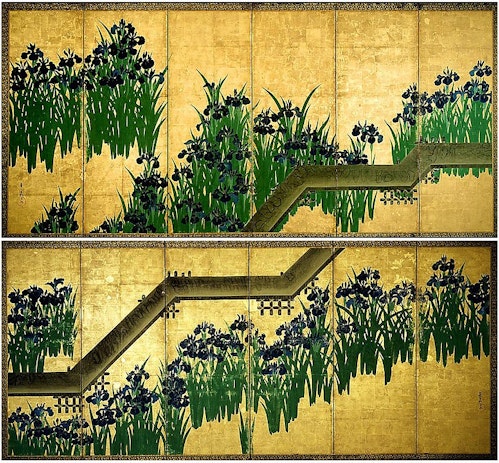
Considered one of Korin's greatest works, this folding screen is considered one of the twin masterpieces of the Rimpa school in the United States.
The dashing, brightly painted group of green and purple swallow-tail flowers and ink-tinged yatsuhashi bridge emerge from a golden background. The vivid composition and colors seem to appeal directly to our senses.
The repetition of the flowers and the staggered yatsuhashi crossing diagonally between them create a sharp tension.
(4) Georges Seurat, "Circus Guests
1887-1888
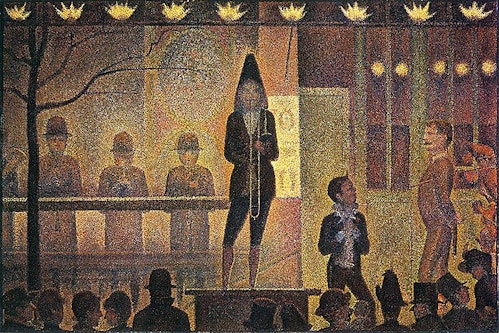
Although it is called a circus, the performance on the screen is not at all vivacious or jovial, but rather quiet and unnerving. Using a fine brush, Seurat covered the canvas with countless dots of dark purples, oranges, and greens.
He painted a number of works on the subject of the circus, a newly developed urban pastime in Parisian society at the time.
(5) Vincent van Gogh, The Thread Cedars
1889
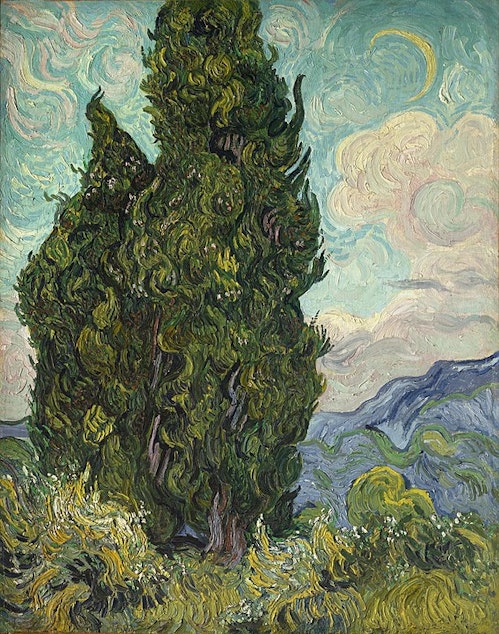
Vincent van Gogh also used cypress as a subject in several other paintings.
It is likely that the unique form and texture of cypresses were familiar to Van Gogh because of his unique, undulating, and intense brushstrokes, which seem to carve each brushstroke into the canvas with great intensity.
The poplar tree, which is very similar in appearance, was also often used as a theme in the same way. Perhaps it was an easy motif for him to express his style of painting with strong matière and the sense of life it represents.
(6) John Singer Sargent, Portrait of Madame X
1883-1884
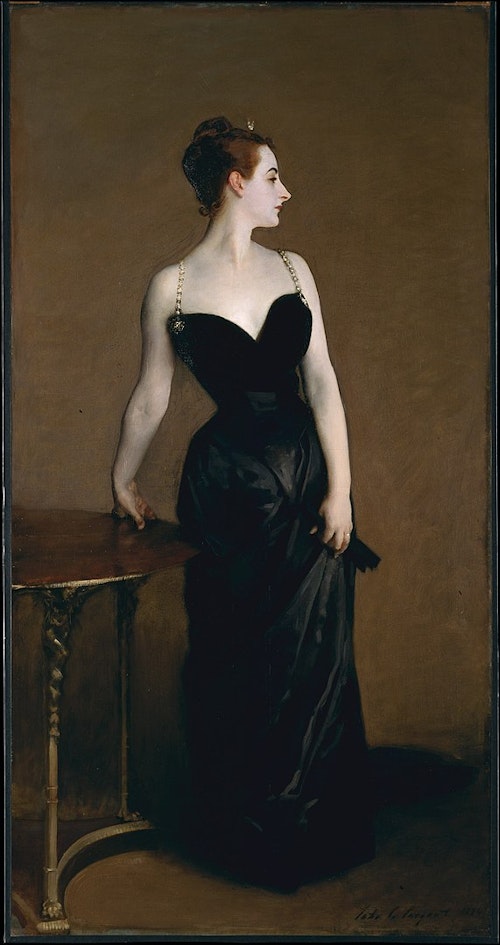
This work, considered to be the American artist Sargent's masterpiece, initially caused a scandal in the Paris Salon because the left shoulder strap on the left side was painted in a dropped position, which was considered "undignified.
Sargent had the strap redrawn, and the work was not shown to the public for more than 30 years.
When he later sold it to the Metropolitan Museum of Art, he commented that he considered it his masterpiece, while at the same time stipulating that the model remain anonymous.
(vii) Johannes Vermeer, Woman with a Pitcher.
Circa 1662-1663
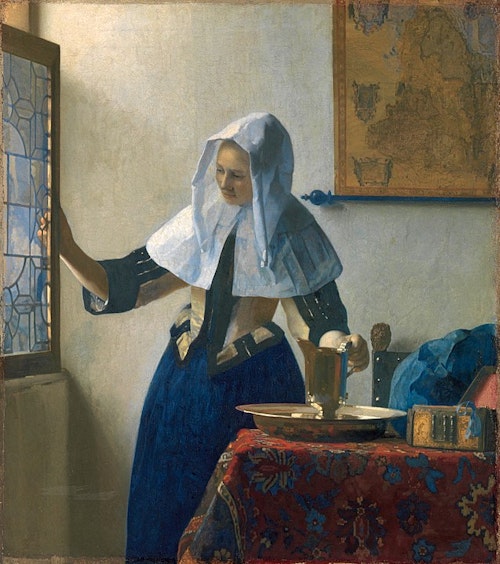
This work depicts a room with a window on the left, a composition typical of Vermeer. It is famous for its very good state of preservation.
The woman holds her right hand over the window frame and her left hand holds the handle of a pitcher on the table, a symbol of purity and temperance. It looks as if she is about to throw the water from the pitcher out of the window.
The jewelry box on the table is said to represent vanity. Is the woman at a crossroads, deciding whether to abandon "temperance" for "vanity"? It seems to contain various allegories.
8) "Young Man's Head
Date and artist unknown
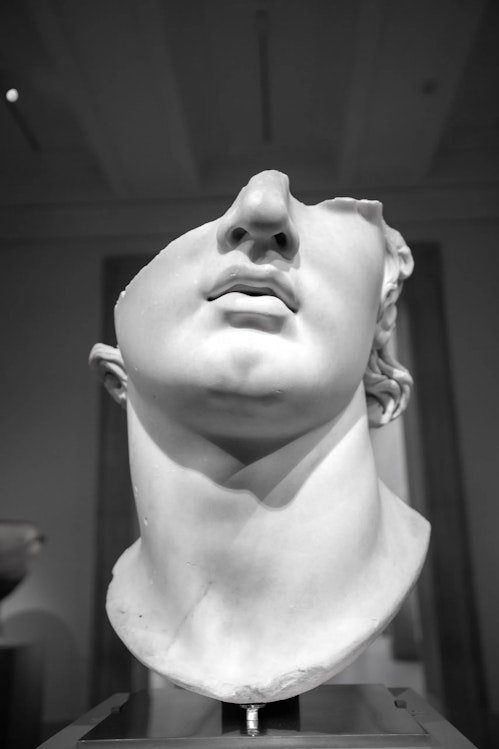
Probably a copy of an ancient Greek sculpture, this Roman sculpture is missing about half of its head. This sculpture, with its "beauty of chips" similar to that of the Louvre's "Niquet de Samothrace," is very attractive.
(ix) Pierre-Auguste Renoir, "Young Woman Bathing".
1892

This work from Renoir's mature period depicts a nude woman standing in the changing light in a style that is uniquely his own. Renoir's use of transparent colors and the beauty of the woman's skin and hair, expressed through his masterful use of color and brushwork, is fascinating.
The woman's skin is soft and glistening as if illuminated by sunlight, and the texture of her hair is richly rendered. Her facial expressions and gestures also convey a sense of grace and natural beauty. This is truly one of the greatest treasures of Impressionism.
More Information about Metropolitan Museum of Art
Address
1000 5th Ave, New York, NY 10028
Admission Fee
Adults $30
Students $17
Seniors (65+) $22
Children (12 and under) free
Hours of Operation
Sunday-Tuesday, Thursday: 10 am-5 pm
Friday & Saturday: 10 am-9 pm
Closed
Wednesday, 1/1, 1st Monday in May, Thanksgiving Day (4th Thursday in November), Christmas (12/25)
Luggage Rules
There is a simple security check of luggage at the entrance.
Bottled water is allowed. You are not allowed to bring food (not even souvenirs) or drinks other than water. You cannot check them in.
Shoulder bags are allowed. Backpack-type bags should be held in front of your body to avoid bumping into exhibits.
Suitcases and large luggage will not be checked at the coat check. No carry-on luggage will be allowed.
About the Tour
Enter the Metropolitan Museum of Art through the central entrance and you will find the Information Desk.
You can learn about Metropolitan Museum of Art events and free tours, and receive a guide pamphlet (map) of the Metropolitan Museum of Art in Japanese. A digital map of the Metropolitan Museum of Art is also available. Click here for the Visitor's Guide.
TRiCERA ART members receive a variety of benefits and preferences.
- Discounts, including members-only secret sales and coupons
- Create My Collection by registering your favorite artists
- Receive updates on popular artists, exhibitions, and events
- Receive a weekly newsletter with selected art
- Personal Assessment to find out what kind of art you like.
Please register as a member for free and receive the latest information.
Free Member Registration